“Renaissance” is a word that gets thrown around a lot in media criticism. From medieval art to Matthew McConaughey, it’s become somewhat of a catch-all for “thing that was bad now good!” It’s a word that comes to mind when tasked with capturing the state of TV animation in the 2010s, although purists will remind me that the officially recognized animation TV Renaissance was the ‘90s. And those purists are correct—TV animation didn’t get good in the 2010s, it just kept getting better and better and better and better. It is a truly amazing time to be writing and thinking about cartoons.
How are we lucky enough to enjoy BOJACK HORSEMAN, HILDA, ATTACK ON TITAN, STEVEN UNIVERSE, GRAVITY FALLS, and TUCA AND BERTIE all at the same time? People are excited about animation in a way they’ve never been before—and not just cartoon people, real people! This decade, animation permeated the mainstream as a medium—not a genre—thanks entirely to the sheer quality of the animated shows we produced. The diversity in animation art and storytelling this decade is mind-boggling, and I hope to capture just a fraction of it in this article in the hopes of explaining how animation got so dang great. But before we can talk about this decade, we have to go all the way back… back to… the ‘80s!
A BRIEF ANIMATION HISTORY LESSON
I’m not going to mince words for you. Pre-‘90s TV animation was largely shit. Generally speaking if you were a kid in the ‘80s watching cartoons, you were being sold something. Animation was a marketing tool for the lowest common denominator, was made as cheaply and as quickly as possible, and was very strictly divided into a boys demographic and a girls demographic. Sure, sure—you have your TOM AND JERRY and your LOONEY TUNES and your FLINTSTONES, and all of these have artistic merit and historical value. Let me be the first to say that the quality of a show is completely unrelated to your fond memories of it as a child. But if you go back and watch HE-MAN, if you really go back and watch it, is the show itself actually that good?
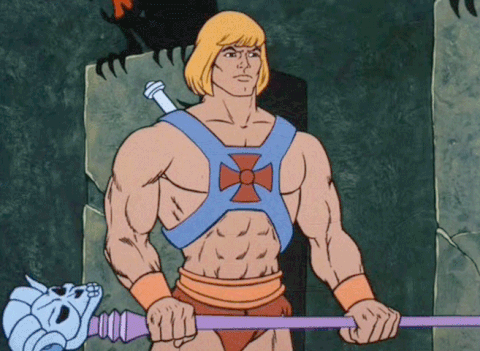
Observe the artistry of this extremely natural human man
“No!” said the ‘90s, “It wasn’t that good!” And so began the officially recognized TV Animation Renaissance. We were cooking with gas—in 1990 we got THE DISNEY AFTERNOON, one of the most highly regarded blocks of animation programming to date; in 1991 we got RUGRATS, which kicked off the empire that is Nicktoons; 1992 saw BATMAN: THE ANIMATED SERIES; and don’t even get me started on ANIMANIACS, TINY TOON ADVENTURES, and GARGOYLES. It’s the kind of heel turn in quality that really makes you understand why people call it a Renaissance. These shows didn’t just have higher production quality—they’re intelligent programming for kids and adults alike. BATMAN is still lauded as one of the greatest television series of all time—animated or otherwise. GARGOYLES is completely hinged around an allegory for racism, and RUGRATS was one of the first series to positively depict a Jewish-American family and actually taught kids about Jewish heritage. For the first time, viewers could see themselves in the cartoons they watched.
The ‘90s kicked off a cartoon shockwave of quality that we’re still riding today. The animation artists and writers who worked at Filmation and Hanna Barbera in the ‘80s went on to create the most beloved shows of the ‘90s. Subsequently, kids who grew up watching Filmation and Hanna Barbera went on to work on those beloved ‘90s shows, and would ultimately create their own shows in the 2000s.
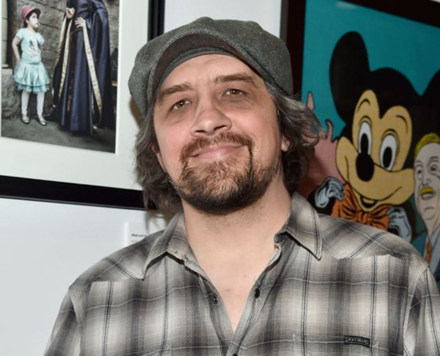
If you didn’t know, this is the face of your childhood. And now you know.
And suddenly, it’s the early aughts! Buh-boom! SPONGEBOB SQUAREPANTS! THE POWERPUFF GIRLS! Ka-plow! SAMURAI JACK! TEEN TITANS! Sha-zam! HEY ARNOLD!, INVADER ZIM, THE FAIRLY ODDPARENTS! Wow, wow, wow!
I have to admit to some degree of nostalgia goggles for this section, because these were the shows I watched as a youngun. If I had to pick one huge difference between the cartoons of the ‘90s and the aughts, I’d say the aughts were overall more grounded in authentic human experiences; for the most part, they skewed more toward magical realism and less toward straight-up fantasy. Don’t get me wrong—we still had our share of harebrained cartoony weirdness. After all, we are the generation scandalized by the slupring of jawbreakers in ED, EDD, N EDDY; plagued with nightmares by COURAGE THE COWARDLY DOG; and I’m honestly still unpacking whatever CATDOG did to me. But compare DANNY PHANTOM or AS TOLD BY GINGER to Filmation’s glorified advertisements. Even the zaniest of zany shows were rooted in authentic stories kids could relate to—especially our fears and anxieties.
These aforementioned fears and anxieties kept little Kate up until 2 A.M. sometimes—late enough for TOONAMI to come on and introduce her to lots of weird, cool anime! The secret sauce in our 2010s animation soup is anime, and I feel like this doesn’t get nearly the appreciation it deserves. Between Adult Swim, Toonami, and Kids WB, Japanese animation was truly accessible to the impressionable youth of America—and we loved it. I needn’t remind you of a little franchise known as POKEMON, but staying up way past your bedtime to catch a glimpse of DRAGON BALL Z, NARUTO, INUYASHA, or BLEACH was the bomb. Not only did anime cultivate a taste for the weird in us budding millennials, it imbued Japanese storytelling sensibilities in our little spongy brains. General Japanese audiences caught onto animation way earlier than American audiences did, and anime perfected the art of longform, arc-based storytelling geared towards adults. We see this manifest most obviously in Western animation with AVATAR: THE LAST AIRBENDER, which middle school weeaboo Kate snootily reminded everyone was not real anime. (It is.)

Ha ha! What an embarrassing picture of middle school weeaboo Kate!
I haven’t even touched on adult animation—mostly because as of this point in our story it’s been largely unchanged. THE FLINTSTONES (which drew from classic American family sitcoms) served as a template for pretty much all the primetime animated comedies, and essentially still does. THE SIMPSONS, FAMILY GUY, AMERICAN DAD, and KING OF THE HILL are cut from the same cloth, and as of the aughts, the big disruption in primetime adult animated comedy wouldn’t come for a little while longer. However, these series (especially THE SIMPSONS) resonated with the animation creators of tomorrow for many of the same reasons the younger-skewing shows did: solid, authentic storytelling. Outside of primetime, pre-2010 “adult” animation was extremely niche: SOUTH PARK is the standout with its two major ratings peaks in 1998 and 2010. Otherwise, you’re looking at METALOCALYPSE, AQUA TEEN HUNGER FORCE, SPACE GHOST: COAST TO COAST, ROBOT CHICKEN, etc. Again—all influential in their own way—but adult animation wouldn’t be completely upended just yet.
So. You’ve got a generation of kids who grew up in the ‘90s on the greatest cartoons in TV history to date; sank their teeth into some quality longform animated storytelling via the distribution of anime in the western world; and spent their early careers working at Disney, Cartoon Network, and Nickelodeon between 2000 and 2009. What now?
Well, dear reader, something amazing happens.
THE NOT-RENAISSANCE RENAISSANCE
Streamers have fundamentally altered the way we make and consume TV forever, and the pivot from linear television was especially transformative for animation. If you thought the broadcasting guidelines were rough for live action TV, kids’ TV is a whole other animal. I just did a big ol’ history lesson, so I won’t bore you with the specifics, but let’s just say the FCC’s stranglehold on kids’ programming requires each show to fill no less than 30 minutes, designates a specific window of time for it to air, and requires some form of “educational” component if it’s intended for audiences 16 or younger. Broadcast animation is also divided into very specific subcategories that carry further limitations on what they can and can’t do: “preschool” (DORA THE EXPLORER), “6 – 11” (FAIRLY ODD PARENTS), and “adult” (FAMILY GUY). Of course great animated shows were still being made on broadcast TV in the early 2010s—ADVENTURE TIME, REGULAR SHOW, and MY LITTLE PONY: FRIENDSHIP IS MAGIC all premiered in 2010 on the dot. But these rules put a bit of a ceiling on what animated series could accomplish.
Animated shows on streamers? Well, that’s a horse of a different color.
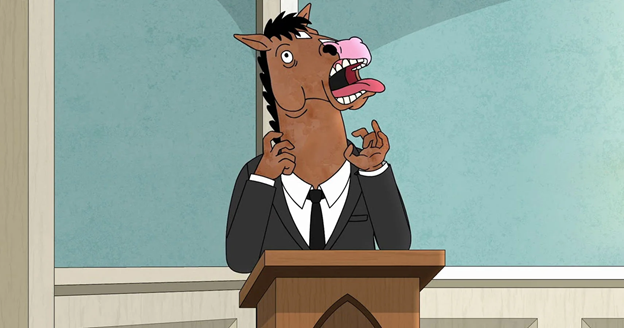
Get it? Cause… He’s a… Yeah, you get it.
The rise of streaming in the 2010s allowed animation to stretch the boundaries between its traditional age groups, and even the broadcast networks started fudging the rules to keep up. Instead of the traditional three categories, we have “preschool,” “bridge,” “6 – 11,” “9 – 14,” “older teen,” “adult,” and “18 – 35.” If these lines seem blurry to you, don’t worry, they’re getting blurrier by the day. HILDA, by definition, is preschool. It’s wholesome with an undertone of emotional curriculum, but it’s also gorgeous and dark and steeped in mythology and carries a haunting environmental message. STEVEN UNIVERSE is 6 – 11. It has a rich world of story spanning back thousands of years, sees characters live and die, betray each other, and cope with identity, love, and loss. It’s at the forefront of LGBT+ representation on television, putting trans, nonbinary, and LGBT folks at the forefront as complicated characters with rich inner lives. If that’s 6 – 11, what the hell is 9 – 14 or adult? It’s almost like people are just making great shows designed for everyone. Y’know—kinda like… regular shows.
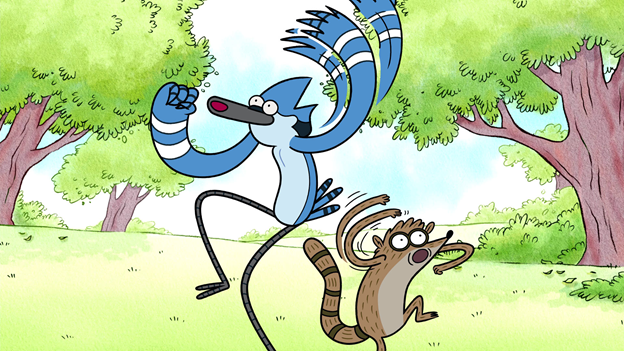
Not exactly what I meant, but kinda, yeah!
The sheer amount of animation produced this decade is staggering. As everyone and their grandmother decided to launch their own streaming platform in the 2010s, they quickly realized they’d better make some dang shows. Turns out, animation is timeless and cost-effective: a great investment when you’re looking for shows to live forever on your platform. The high volume of animated shows and streaming platforms available extended access to folks who maybe wouldn’t have gravitated to animation before, especially when streamers displayed their animated offerings alongside live action series. Between Netflix, Hulu, VRV, Crunchyroll, Disney+, Apple TV+, and even more to come— there was a lot of real estate available for animated shows, and a knockout generation of creators ready to break ground.
A content arms race ensued, which enabled buyers to take bigger swings on the shows they produced. Greener creators and folks of varying backgrounds were put in the driver’s seat where they maybe couldn’t have sat before, which put animation at the forefront of diverse, timely storytelling way before live action caught on. For LGBT+ representation we have the aforementioned STEVEN UNIVERSE, ADVENTURE TIME, THE LEGEND OF KORRA, and SHE-RA AND THE PRINCESSES OF POWER all telling authentic, non-tokenized stories and highlighting actual voices from the community. CRAIG OF THE CREEK is a slice-of-life comedy about a black kid without being about a black kid—there are certain realities of blackness woven into the story, but overall, Craig is a normal kid who likes to play outside. It challenges the notion that the default protagonist of a kids’ cartoon is white. AMPHIBIA is a magical girl show about a Thai-American girl who gets transported to a frog world. Characters speaking subtitled Thai in an animated kids show? Be still my heart! VAMPIRINA is a preschool series about immigration and racism: in the pilot episode, Vampirina (a vampire) moves to a human neighborhood and befriends a human girl whose mom “doesn’t like vampires.” BOJACK HORSEMAN and RICK AND MORTY tackle mental illness in different but invaluable ways, capturing the blend of dark comedy and despair that is the constant reality of living that non-neurotypical life.
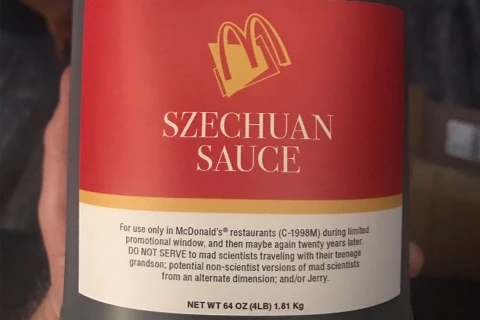
Some confrontations with the reality of mental illness were more visceral than others
Naturally in any kind of “rush,” there’s going to be a little trampling. Because there is just so much animation production, rates across the board slowly decreased in the latter half of the decade. There is a trend toward “mini-rooms,” where in lieu of a weekly paycheck and standard writers’ room, the writing team of a series will meet up for a two-day writers’ summit and then will write their script assignments at home for a flat script fee. This is a problem in live action as well, but is particularly prevalent in the animation world—especially in preschool and tween. Another live action trend that’s trickled down to animation is the streamers’ realization that they really only need two or three seasons of a series to retain their subscribers. This can be a good thing so you don’t end up with, say, King Bran, but the most egregious cancellation to date was the critically acclaimed, unapologetic, bonkers, and amazing TUCA AND BERTIE after one season. Female showrunners in the adult animation space are essentially nonexistent, and Netflix’s decision to can this gem is completely lost on me. It’s an unfortunate side effect of the volume of animated series on the slate. Streamers started to prioritize business over creative, and as much as we’ve been able to make amazing content, we’ve already missed out on some great stuff because techy start-up minds are more interested in the bottom line. Animation is clearly a growing bubble that will burst eventually, but even so, I’m of the belief that it’s a net positive.
All this amounts to a decade of top-notch, diverse, different animated series with more universal appeal than ever before. As publications start listing their top animated series of the decade, you’ll see BOJACK, RICK AND MORTY, GRAVITY FALLS, and BOB’S BURGERS right up there with MAD MEN and BREAKING BAD. These series captured mainstream audiences in an unprecedented way, sparking conversations about animation as a legitimate medium for mature storytelling. Turns out, growing up with cartoons that treat you like an adult gives you an appreciation for the art instead of relegating an entire section of the entertainment industry to kids purgatory. I can only imagine what the kids of today will go on to create having grown up on all the incredible shows I listed above.
SO, WHAT HAPPENS NOW?
Now that we’ve talked about how we got here and where we are, let’s make some sweeping predictions about the future!
As we rocket into the roaring ‘20s (or, more realistically, the beleaguered, sighing ‘20s), the animation gold rush shows no signs of stopping. Streamers will continue to dominate over broadcast, paving the way for more flexibility in content and format as the focus shifts away from linear programming blocks. Some of the major players have already started experimenting with new formats. Cartoon Network found huge success with its first two animated miniseries, OVER THE GARDEN WALL and INFINITY TRAIN, and seems set to continue the trend. Quibi is launching this April with a strict seven-minute episode “quick bite” format. With the flexibility of streaming, we may even start to see hour-long animated “movies.”
Content overall will skew more adult. “Bridge” (between preschool and 6-11) and “9-14” will become more common to reflect an audience that’s growing older faster than ever. Today’s children are notoriously full of anxiety what with the planet dying beneath them and being powerless to change anything about it. Kids’ content will start to reflect this—particularly animation, which has always been at the forefront of tackling difficult issues facing kids in an easy to process way. There is an increased appetite for kids horror, or “scary safe”—reflected in series like ARE YOU AFRAID OF THE DARK?, STRANGER THINGS (weirdly popular with kids), and Disney’s upcoming OWL HOUSE. In the actual adult animation space, it will get very dark and very weird. Now that kids’ animation is essentially all audiences, actual adult animation will become more niche to compensate. Adult Swim announced the return of Toonami featuring Junji Ito’s UZUMAKI as an animated miniseries, which I personally cannot wait for.
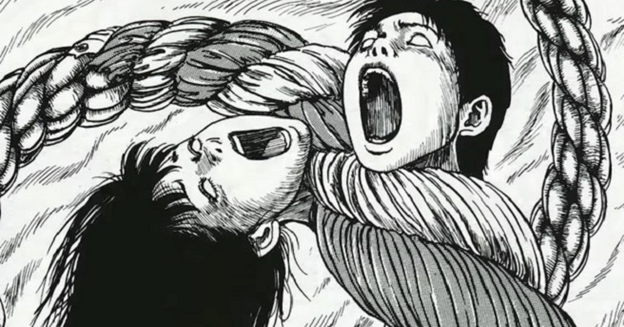
Mom will love this one!
As far as new “big things” in animation for the 2020s, I think we’ll start seeing a lot more interactive content. Netflix’s biggest foray so far was BLACK MIRROR: BANDERSNATCH, but they’ve actually put out a handful of interactive animated specials with PUSS IN BOOTS and MINECRAFT: STORY MODE. The polyamourous coupling of TV, film, and video games is yielding some really exciting stuff (Hideo Kojima, just make a damn movie already!) and the experimental nature of animation will provide an excellent sandbox for further expansion. I’d also expect a big boom in hybrid animation—both hybrid 2D/3D and hybrid animation/live action. There’s already been one big splashy hybrid announcement with TOONED OUT, executive produced by Robert Zemeckis and launching on HBO Max. We’ll start to see more inventive visual styles that make use of burgeoning technology. Elizabeth Ito’s new Netflix series CITY OF GHOSTS is billed as a hybrid documentary and animated series—and if the look of this show is anything like her incredible Cartoon Network short, I’m excited. It’s clear by now that animation is never going fully back to traditional 2D, but with the success of INTO THE SPIDERVERSE, KLAUS, and UNDONE, audiences have demonstrated their openness to cool, weird visual styles.
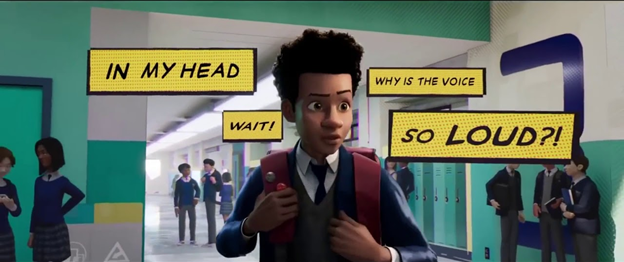
A film so influential I would be remiss to not mention it in an article about TV
Personal wishes? Well, since you asked, I’d love to see more animation recognized by the WGA. To date, the only animated series covered by the WGA are primetime: THE SIMPSONS, BOB’S BURGERS, AMERICAN DAD, FAMILY GUY, etc. There are some scattershot exceptions to the rule and some bizarre exclusions. BOJACK HORSEMAN, despite not being a linear primetime series, is covered by the WGA. RICK AND MORTY airs first on linear and is as close to primetime as BOJACK, but is not a WGA show. Tween, kids, and preschool have historically never been recognized; even though these writers do the same job as traditional WGA writers, they don’t benefit from the same protections. BOJACK and TUCA AND BERTIE’S unionization on the artists’ side and the #PayUpHollywood movement sparked some discussions to this effect, and I hope they continue.
I also would love to see anime truly hit the mainstream the way Western animation has. It’s getting closer, especially with anime-adjacent video games like PERSONA 5, NEIR: AUTOMATA, and BAYONETTA 2 squarely in “acceptable to like” territory. Crunchyroll is also more ubiquitous than ever and offers an insanely vast library, plus simultaneous episode releases with Japan. There is so much amazing anime content out there that I as an animation geek haven’t even tapped into fully, and I hope it sees its day in the sun in the upcoming decade. Anime as a whole deserves the “medium, not genre” discussion that Western animation is afforded.
This last one is a total shot in the dark and also outside the scope of this article, but I want an animated film to win Best Picture. Honestly, if INTO THE SPIDERVERSE couldn’t do it I don’t know what could, but yeah, I said it!
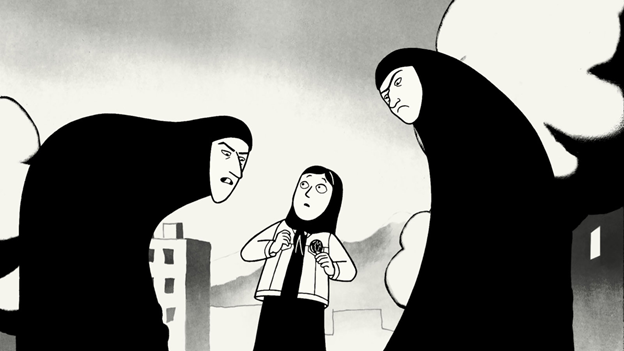
Not like any current events could potentially inspire a wave of new incredible animated features, but y’know, I’m just spitballing here
I am constantly amazed, honored, and delighted to get to think and write about animation every day. In 2010, I was a Disney-obsessed high school girl who would tear her hair out at the idea that cartoons were “for kids,” and would spend hours struggling through anime drawing tutorials in the hopes that I could one day walk among the gods in Burbank. Now it’s 2020 and I can’t draw for shit, but I do work in animation, I’ve tricked my friends into starting a business where I get to write 3000+ word thinkpieces about cartoons whenever I want, and I live in the San Fernando valley! The 2010s were a decade of realizing potential, for me and for the animation community at large. I am optimistic we will all continue to grow in the 2020s.


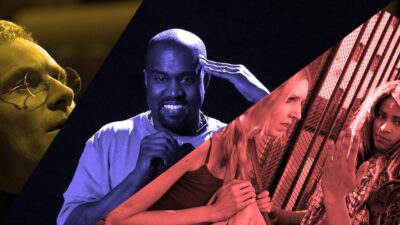
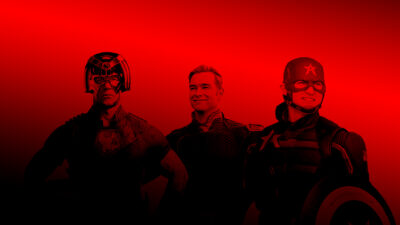


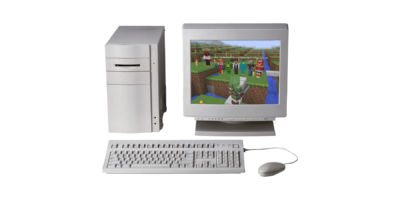
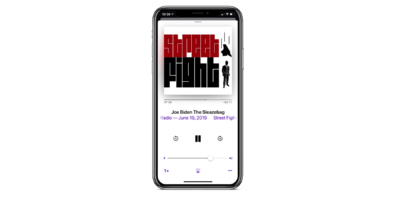
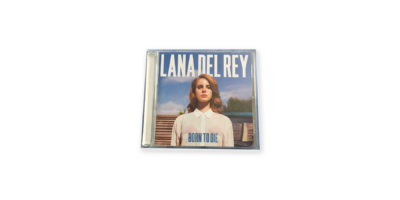
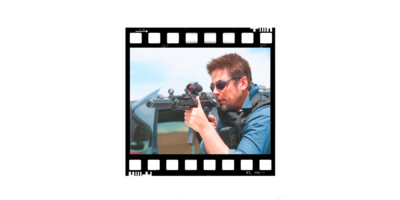
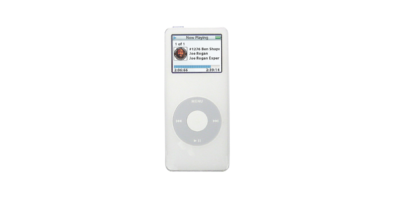
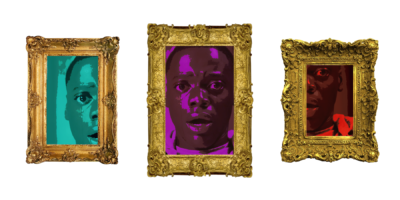




Comments